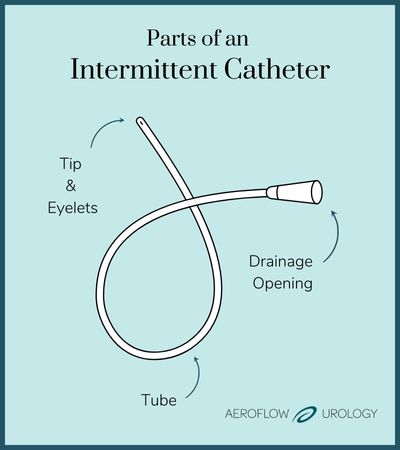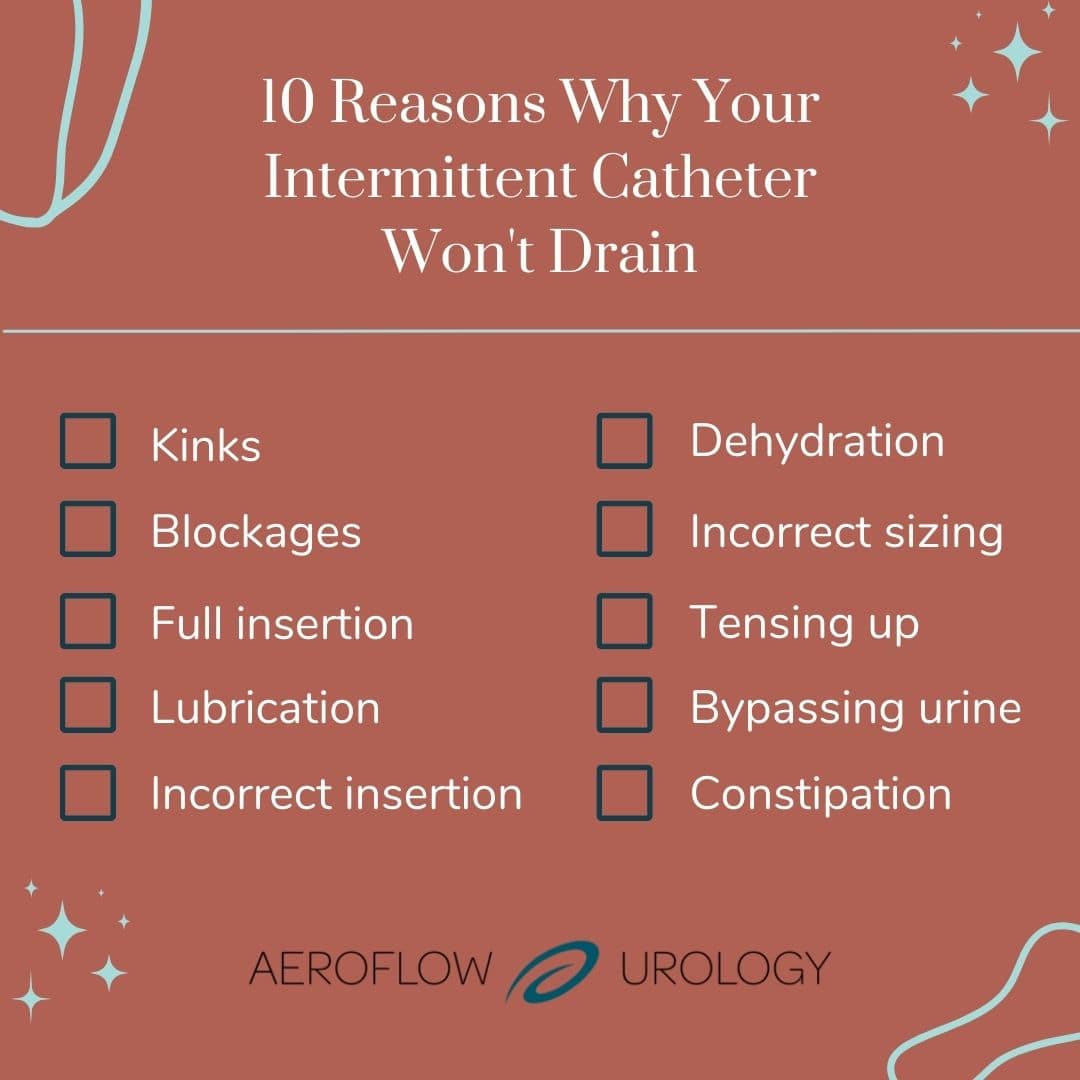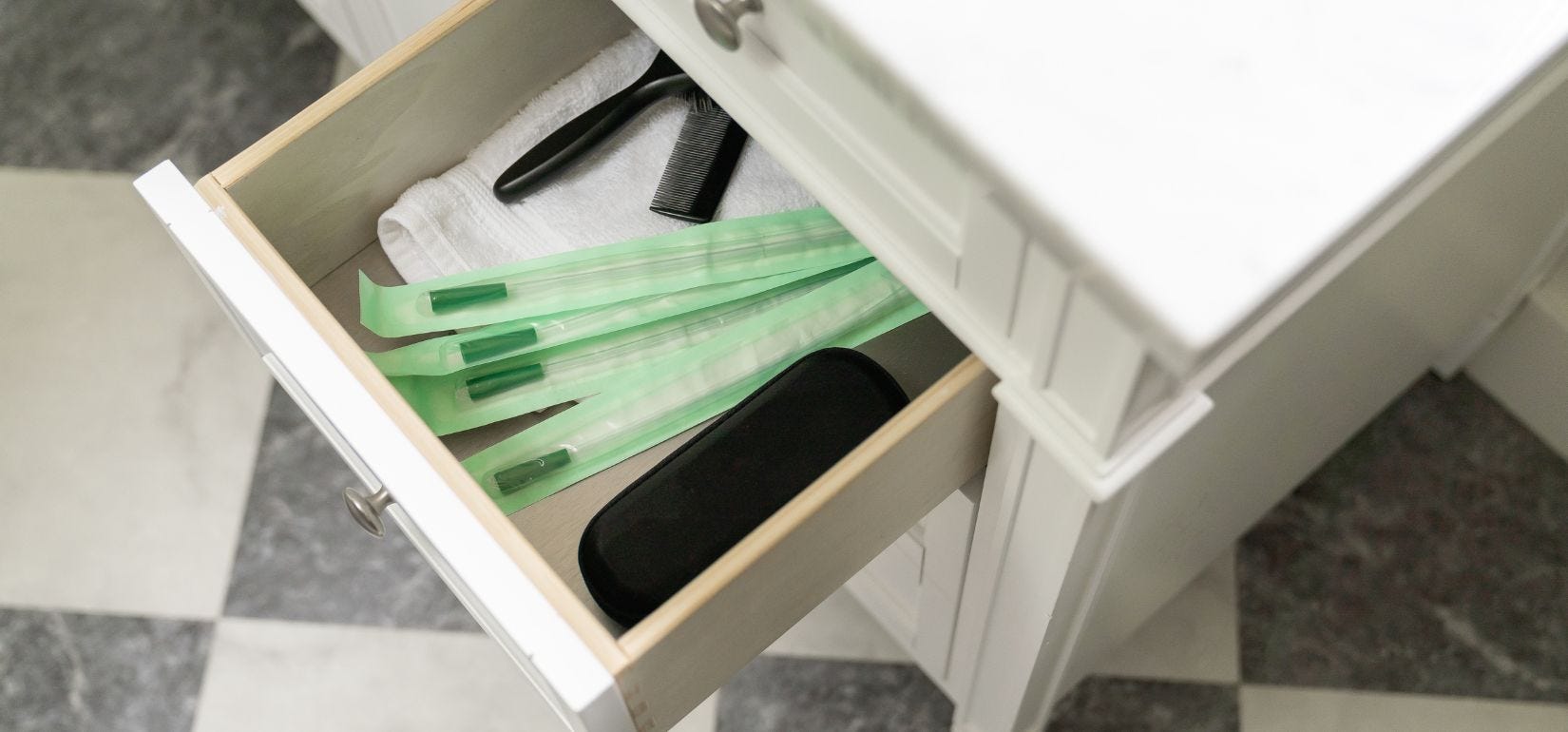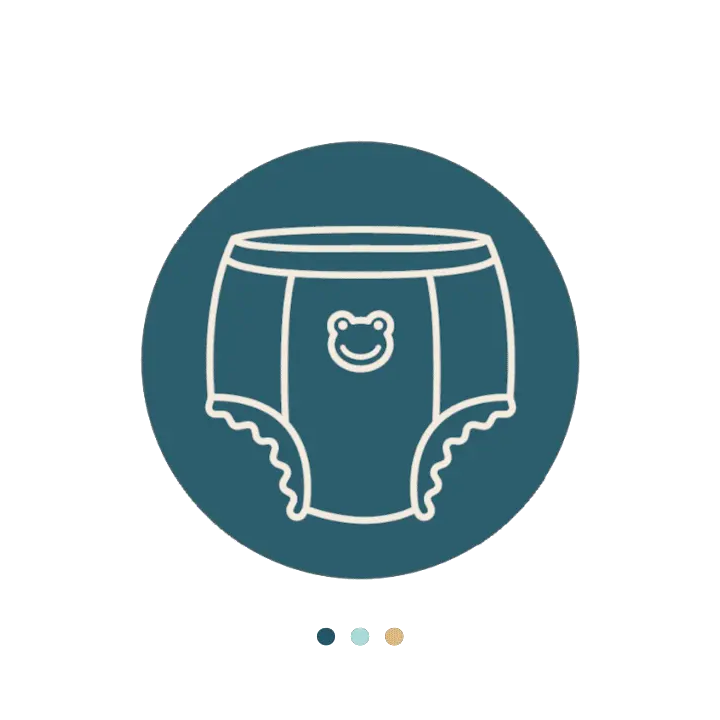If you have an intermittent catheter and it’s not draining when trying to void your bladder, it may be a sign of a blockage, a kink, or another issue.
Here, we’ll explain why this may happen to you and how to best practice intermittent catheter care.
What Is An Intermittent Catheter?
Intermittent catheters are self-catheterization systems that are used for emptying your bladder. You may be prescribed an intermittent catheter if you have:
- Urinary incontinence (loss of bladder control).
- Urinary retention (inability to empty bladder).
- An obstruction, such as a bladder stone.
- Prostate or genital surgery.
- Injury to the spinal cord or bladder.
Check Your Eligibility
2 Easy Steps
Discover the catheter supplies covered by your insurance.
Parts of the Intermittent Catheter System
Tip: The tip has eyelets and is inserted into your body through your urethra.
Urine enters this tip through the eyelets. Tips can be straight or curved (coudé tip) to navigate around urethral blockages.
Tube: Tubes consist of different lengths, widths (the french size), and materials. The tub lets urine drain from your bladder into a receptacle. Widths can range from french sizes 5 to 24. Lengths vary from 6 to 16 inches.
Drainage Opening: The drainage opening is sometimes called a funnel. It is wider than the rest of the catheter to let urine flow out of the tube. For intermittent catheters, the drainage opening is the end of the system.
Types of Intermittent Catheters
- Uncoated
- Single-use.
- Require lubrication before use.
- Come with lubrication packets.
- Coudé Tip
- Have a curved or bent tip.
- Straight Tip
- Straight from end to end.
- Pre-Lubricated
- Known as hydrophilic or coated catheters.
- Lubricating gel comes applied to the catheter.
10 Reasons Why Your Intermittent Catheter Isn't Draining


There could be multiple reasons you aren’t experiencing urine drainage when using your intermittent urinary catheter. Read about them below and follow these troubleshooting tips.
1. There is a kink in the tubing.
Twists or kinks can occur along your catheter tube, so check and untangle them if they are present. This should allow the flow of urine to make it all the way out of the tube.
2. You have a blockage in your catheter.
Intermittent catheter blockages can occur from minerals, salt, and crystalline deposits building up in the tube holes or eyelets. If you see an encrusted blockage like this, replace your catheter and try inserting a new one.
3. The tube is not inserted all the way.
For urine to drain out, the eyelet holes at the tip of the catheter need to be inside your bladder. If your urine isn't draining, it could be because the eyelets aren't reaching your bladder.
Slowly insert the catheter further into your bladder by 2 centimeters at a time. There should only be around 4 inches of the tube visible after insertion. Once urine begins to flow, you’ll know it’s far enough inside.
4. Lubrication is blocking the holes.


Sometimes the lubrication you apply can get stuck in the eyelets or drainage tube, causing a catheter blockage, and preventing urine from entering or exiting. Water-soluble lubricant will slowly absorb as you urinate, so wait a couple of minutes for urine to flow, or try coughing to help push your urine through the tube.
5. The catheter is inserted incorrectly.
If you are female and your catheter isn’t draining, it may be because you inserted the catheter into your vagina. If this happens, remove your catheter and try again with a new one.
6. You aren't drinking enough fluids.
If your fluid intake is too low, you may be unable to empty your bladder. Staying hydrated also helps flush toxins and bacteria from your body which can help prevent infections like urinary tract infections (UTIs). Men should drink around 15 cups of water per day for proper hydration, and women should drink about 11 cups.
7. Your catheter is the wrong size.
The length and width of your catheter should allow you to insert the catheter through your urethra smoothly. If your intermittent catheter won’t drain your urine and you’ve checked the other troubleshooting tips, speak with your healthcare provider or one of Aeroflow Urology’s Continence Care Specialists about which size you should be using. You may be using a size too wide in width or too short in length.
8. You're too tense.
Tensing up during self-catheterization can cause your insertion to be more difficult. Take deep breaths and relax your body while inserting the catheter completely.
9. You're experiencing bypassing.
Bypassing (leaking) urine around your intermittent catheter can cause your urine not to drain correctly.
Instead, the urine will leak out the sides of your catheter. Make sure your catheter is inserted fully through your urethra.
10. You're constipated.
If you have constipation, the pressure may be putting too much force on your bladder, causing it not to drain correctly. Make regular bowel movements, eat a diet full of fiber, or speak with a healthcare provider about gastrointestinal issues.
If Your Catheter Still Won't Drain
If your catheter still doesn’t drain, it could indicate an incorrect size or a more severe problem. Speak with a healthcare professional to discover why your catheter won’t drain. You should also reach out to your healthcare provider right away if you experience:
- Bloody or cloudy urine.
- Leakage of urine around your catheter.
- Pressure, pain, or general discomfort in your stomach or lower back.
- Chills or fever.
- Nausea or vomiting.
- A burning sensation in the urinary tract.
How to Get Low-Cost Catheter Supplies Through Insurance
If you use an intermittent catheter or another type of catheter, you may be eligible to receive a multitude of high-quality catheter supplies at a low cost through your insurance plan with Aeroflow Urology.
To get started today, simply fill out our 5-minute Qualification Form.
If you do qualify, we will:
- Send you free catheter samples so you can find the perfect fit.
- Assign a dedicated Care Specialist to answer any questions and help you along the way.
- Ship your catheter supplies right to your front door for free.
- Refill your supplies every month and send a reminder through an email or text.
Information provided on the Aeroflow Urology blog is not intended as a substitute for medical advice or care from a healthcare professional. Aeroflow recommends consulting your healthcare provider if you are experiencing medical issues relating to incontinence.







